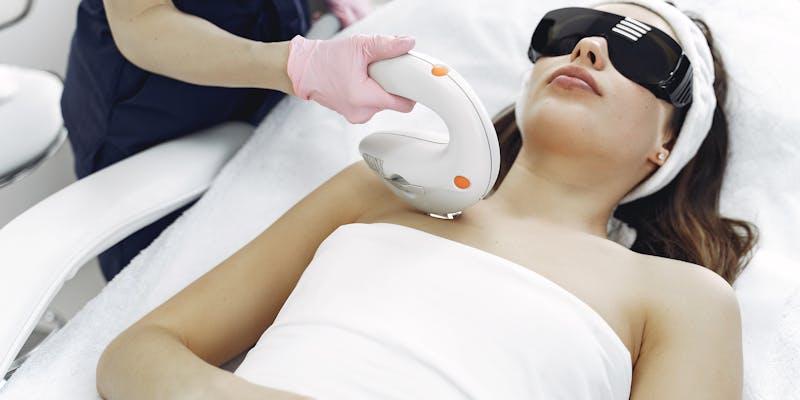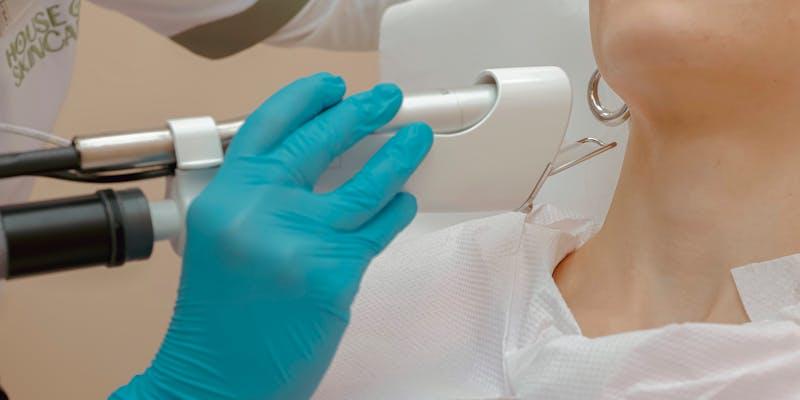Learn All You Need to Know About Laser Hair Removal...
Mar 17, 2024 By Madison Evans
A medical-grade laser beam of intense light targets hair follicles in a process known as laser hair removal. The laser is specifically engineered to target dark, coarse hair, sparing the surrounding skin while precisely zapping the follicle. The hair is damaged because the pigment in the follicles absorbs light. To provide you with the most pleasant and successful treatment possible, specialists will customize the laser to match your skin and hair color, hair thickness, and the region of your body that will be treated.
Cost Of Laser Hair Removal
Full body laser hair removal is notoriously expensive despite its reputation as a top-tier hair removal method. The laser centers provide some ballpark figures, but the exact amount will depend on the treatment area and the frequency of treatments.
Treatments for small areas, such as the top lip, might cost less than 100. A region as big as the legs might need a single treatment that costs less than 300. Prices for full body laser hair removal vary widely depending on factors such as the therapist's level of experience and the location in which you reside. You may save money at many salons by scheduling six sessions at once.
Working Of Laser Hair Removal Work
Full-body laser hair removal relies on selective photothermolysis (SPTL). It's the skill of carefully adjusting light wavelength and pulse interval to target certain tissues without harming other cells. For years, we used razor blades or wax strips to remove unwanted hair. Hair may regrow, so these operations were temporary. It works: after slaving in the shower in the morning, your hair mysteriously grows back, even after several days of treatment. It was unavoidable to find Melanin, the hair-color pigment.
For brown or black hair, you need eumelanin. Blonde or red hair requires pheomelanin. Hair may be targeted with a focused laser beam that the skin's melanin can absorb. Without injuring or hurting the surrounding skin, the energy safely warms the hair, destroying the follicle (the building block of hair) and preventing further development.
Types of Laser Hair Removal Treatment

Intense Pulsed Light
Intense pulse light (IPL) is often mistaken for laser hair removal. However, it uses light. Just as lasers target specific areas of the scalp, intense pulsed light (IPL) targets individual hair follicles. Treatment intensity might vary from patient to patient based on factors including hair density and skin tone. Multiple sessions are required to complete the operation.
Laser Diode Hair Removal
Diode laser treatments work well for fine hair and any medium to dark complexion shade. Although the number of sessions required to complete the Diode method varies from person to person, it is less unpleasant and requires fewer sessions overall.
Alexandrite Laser Hair Removal
The Alexandrite method is more effective on lighter skin tones, especially for laser hair removal arms. The laser is less painful than other lasers due to its lower wavelength and shallow penetration. This method may need more sessions for permanent hair removal due to the lower wavelengths it employs.
Ruby Laser Hair Removal
It was the pioneering method for permanently removing hair. It is often less effective and takes longer than other methods. Therefore, it has mainly fallen out of favor. However, lighter hair and skin tones will benefit the most from it. Even while the laser doesn't damage other skin tissues or structures, it damages the hair follicles.
Benefits Of Laser Hair Removal

Long-term Results
Unfortunately, most permanent hair removal procedures only work temporarily. Laser hair removal stands out due to its longer-lasting solution. You may get smooth skin without upkeep with a few treatments to substantially reduce hair growth. This therapy targets hair follicles to prevent further growth. Never having unattractive hair again would be a comfort. Laser hair removal arms promise long-lasting smoothness unequaled by other methods.
Quick and Efficient Treatment
Laser hair removal arms work well and efficiently. Treatment of big body parts like both legs might take as little as 30 minutes. Thanks to its speed, hair removal will no longer take up your day. Laser treatments on the legs, arms, or other body parts provide fast results, making them ideal for busy people who care about their appearance.
Although no hair removal therapy is painless, full body laser hair removal is more comfortable than waxing or threading for many individuals. A topical anesthetic before the surgery might reduce the abrupt, severe heat that is a common complaint. Laser hair removal is less intrusive and more appealing for smooth, hair-free skin.
Reduction of Ingrown Hairs and Smooth Texture
Full body laser hair removal is an excellent option for ingrown hair-free hair removal. This therapy targets the hair's roots to prevent ingrown hairs, which usually grow back into the skin. Laser hair removal may assist with ingrown hairs, which can irritate and smooth skin.
Laser hair removal is its main application and improves skin appearance. This process may reduce fine wrinkles and pores, giving skin a younger, more radiant look. In addition to eliminating hair, laser hair removal enhances skin quality and texture.
Drawbacks Of Laser Hair Removal
Multiple Sessions Required
Laser hair removal requires many sessions for lasting results. Attend 68 sessions for full impact. The procedure may take months and cost more than expected. Sessions target hair during its formation. However, it will take several treatments to remove all hair due to hair growth rates completely. Despite the effort and money, many find the results worthy. You may also get laser hair removal burns after the session.
Post-Treatment Issues
After laser hair removal, you may get laser hair removal burns or experience redness or swelling. Most patients feel better after a few days of mild symptoms. Resting and using cold compresses or moisturizers as instructed by your technician may reduce discomfort. Though short, this downtime should be expected, especially for busy people or sensitive skin.
Possible Health Side Effects
Laser hair removal may cause blisters, laser hair removal burns, or skin tone changes. However, this is rare. Given these risks, seek a skilled and experienced doctor for your therapy. A patch test will determine how your skin responds to the laser, allowing them to adjust the treatment. Knowing these risks lets you weigh the advantages and downsides of this hair removal method.







